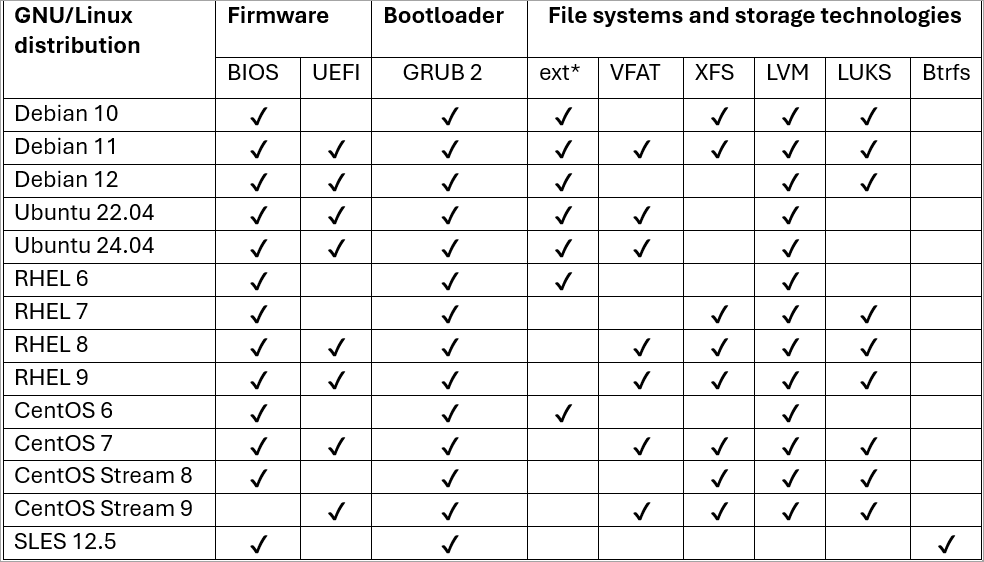Backup requirements
-
The system backup session must be successful to restore the rescue ISO image.
-
All files and folders must be selected in the Files and folders data source.
Only non-system files or folders can be deselected. In case of deselecting system files or folders, the recovered system might be broken or non-bootable because during recovery process, only backed up files and folders are recovered.
Hardware requirements
If a source device is non-bootable or broken, it is necessary to download Cove Rescue Media from the Cove Data Protection Downloads or have a separate Linux device which is used to install the Backup Manager in restore-only mode and restore the rescue ISO image for the source device.
At least 2GB of RAM on the target device is required to load the ISO rescue image. Some Linux systems might require up to 8GB of RAM.
If the recovery system is frozen at boot time and the target device is a virtual one, try to increase the amount of RAM for this device.
Dissimilar hardware
Recovery to dissimilar hardware is possible but might require including additional drivers to the rescue ISO image. The disk layout and capacities must be the same as on the source device or exceed.
Both the target and source devices must have the same firmware type (BIOS or UEFI).
During Bare Metal Recovery, you can use target disks with bigger capacities than source disks.
Systems Coverage
Bare Metal Recovery (BMR) for Linux has been validated on all officially supported distributions. In addition, it has been tested on SUSE 12.5 and RHEL 6. BMR for Linux supports both BIOS and UEFI firmware, the GRUB2 bootloader, and the following filesystems and storage technologies: ext2, ext3, ext4, XFS, Btrfs, vfat, LVM (Logical Volume Manager), and LUKS (Linux Unified Key Setup).
The table image shows systems covered during BMR validation. For example, Debian 10 recovery has been validated across multiple system configurations. Final coverage includes BIOS firmware, the GRUB2 bootloader, ext-family filesystems (ext2/3/4), XFS, LVM, and LUKS.
Recovery
Instructions on restoring data from this data source can be found on Bare Metal Recovery for Linux

